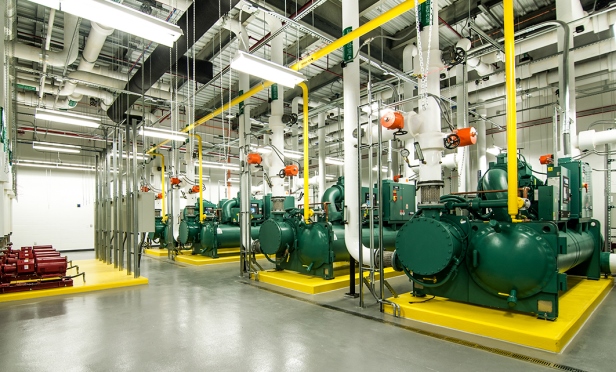 JLL says there's no sign of the data center and cloud space appetite abating anytime soon.
JLL says there's no sign of the data center and cloud space appetite abating anytime soon.
HOUSTON—Building on growing momentum from the first half of 2018, the global data center industry is poised to meet increased demand and navigate economic uncertainty, according to JLL's latest Data Center Outlook. JLL's analysis of the data center industry reveals that the US, Canada; Europe, the Middle East and Africa; and Asia-Pacific amassed a staggering 421.2 megawatts, with the US and Canada leading absorption (292.1 mw), up 31.9% from the first half of 2017.
“Considering the role that digital connectivity plays in our everyday lives and its increased application, there's no sign of this appetite for data center and cloud space abating anytime soon,” says Mark Bauer, JLL managing director and data center solutions co-lead.
Indeed, there has been substantial demand during the past year and increased construction pipelines are meeting the need for more data center space. Currently, 759.7 mw of new construction is underway around the globe.
“Though the majority of new data center product is being developed in the US, the full scope of our industry's global pipeline is a testament to consumer demand increasing everywhere,” said Bo Bond, JLL managing director and data center solutions co-lead.
For example, Austin/San Antonio and Northern California saw the most activity by percentage of total absorption, driven by cloud providers' desire to remain close to growing end-user bases. Additionally, Austin/San Antonio's value strengthened as a disaster recovery location due to the impact of Hurricane Harvey.
While some of these providers and users headed inland following Harvey, Houston's data center facilities proved resilient and weathered the storm as designed, with no direct impact. There are a couple of other takeaways from the Houston market:
Data center demand has increased with recovery of the energy market and there is a large uptick from the healthcare industry outsourcing data center needs. Today, healthcare makes up 30% of user demand for data centers in Houston, up from 15% and 5% in 2017 and 2016, respectively.
Demand from retail and e-commerce sector is also up from 5% of total demand in 2016 to 15% in 2017 and 2018.
Existing quality supply in the market is absorbing recovering demand. There is no new construction underway.
The first half of 2018 had the most positive absorption in recent years with 2 mw of absorption.
Data center users can take advantage of very competitive rental rates and flexibility with regard to footprint, redundancy and term.
“Houston's data center market in many ways is still finding its footing. The recovery of the energy industry has resulted in a slight uptick in rack and cabinet deployments,” Bond tells GlobeSt.com. “More notable though, is the significant increase in demand as health systems increasingly outsource their data center requirements. A recovered local economy, more diverse pool of users and insatiable global demand should mean continued, albeit gradual, growth for Houston's data center market.”
JLL identified five trends impacting the overall data center industry through 2018:
Data center REITs are on the road to recovery. Despite a difficult first few months, recent stock activity signals a strong second half for data center REITs.
The latest National Association of Real Estate Investment Trusts forum in New York delivered confidence for the industry, despite geopolitical and economic concerns. This sentiment is compounded with strong leasing momentum in the first half of 2018.
Software-defined/SD-WAN is redefining data center connectivity. Companies are adopting SD networking and moving away from hardware to reduce costs and improve centralized management.
Blockchain continues to be more than just hype and a buzz word. Data centers are receiving growing demand from the technology as companies move to increase storage capacity and improve data processing.
Data center contracts are modernizing, driven by changing user needs. Contracts are continually evolving as applications have been virtualized and cloud has become an enterprise strategy. The focus is shifting from just power and space to flexibility and portability to accommodate rapid technological changes in the sector.
© Touchpoint Markets, All Rights Reserved. Request academic re-use from www.copyright.com. All other uses, submit a request to [email protected]. For more inforrmation visit Asset & Logo Licensing.







